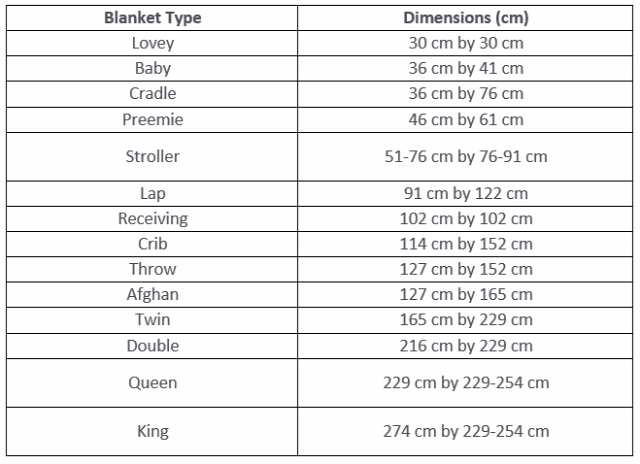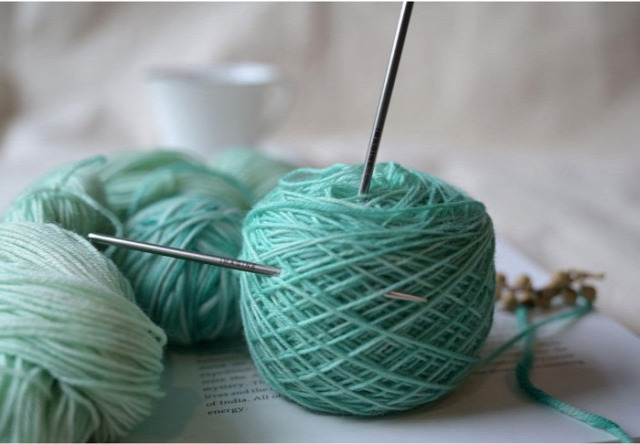The long tail cast-on is a classic technique in knitting. Most knitters use the long tail method. It is well-known for its speed and stretchiness. It's one of the most popular ways to teach new knitters to cast on, and for good reason. Whether you knit with single pointed needles for a flat project such as a scarf or a dishcloth or use the circulars for a wide-width project or a pair of socks, you can adopt the method to make your first stitches. In fact, even if you knit with a set of double pointed needles you can cast on one knitting needle and then transfer stitches to the other needles that will form the circumference.
With one knitting needle in your hand you make the first stitches that you’ll knit from. The slip knot is counted as the first cast on stitch in many knitting patterns and projects but make sure that you have the right count. In fact if you are going to go ahead with a project that requires knitting in the round it is recommended that you cast one extra stitch that would later be used for joining the round.
Now, getting back to the topic of how to cast on stitches on circular knitting needles by the long tail method, let’s get started. To cast on stitches use the same knitting needle you would be using for the project or a size bigger if you have a tight tension or you could also take two knitting needles of different sizes and use them as one.

How to Calculate Yarn for Long Tail Cast on?
Before you make the slip knot on the knitting needles, make you're generous with the length of the yarn tail. In the long tail method, you'll be using the tail when casting on. So, in case you run out of yarn, you won't be able to cast further stitches and have to begin again. Getting just the right length of yarn can be tricky. But, it’s better to have enough yarn than not! But, then again too long tails can be annoying.
There are many ways to calculate how much yarn you’ll need. A general rule is to take four times the yarn length than needed for width or circumference project or three times the width of the project you're casting on for, plus about 6"/ 15cm extra. A very useful technique is to cast on stitches from both ends of the yarn ball or skein so that you will never run out of yarn or use another yarn ball.
With calculations done, let’s make the long tail cast on.
Step 1: Make the slip knot on the knitting needle and hold it in your right hand. As you are using a circular needle hold one tip and let the other dangle.
Step 2: Use your left hand to grasp the two tails of yarn. Hold the yarn with the palm open and index finger and thumb at the top. Position your thumb and finger to create a “slingshot” or a V shape. Keep the same position of the hand and yarn after each cast-on stitch.
Step 3: Insert the knitting needle under the strand of yarn wrapped around your thumb. Remember to hold your left hand like a pistol with the index finger and thumb. Pull up the yarn strand wrapped around your index finger.
Step 4: Pull your yarn out through the thumb loop. Also pull your thumb from the loop of the yarn and pull the yarn to tighten the new stitch.
Step 5: Insert the needle tip into the left thumb loop from below. Pull the yarn strand from your index finger with the right needle, from right to left. Pull the index finger yarn strand down through the loop on your left thumb and release the yarn from your left thumb.
Step 7: Use your thumb and index finger to tighten up the stitch and return to the slingshot position.
Repeat the steps to continue the long tail cast-on until all of your stitches have been cast on. Make sure to leave a 6-inch tail to weave in yarn ends. If you are going to join the round make sure to cast an extra stitch and if you are knitting back and forth, have the exact count of stitches.
The long tail cast on works for a variety of projects. The stretchy method works perfectly for tight knitters. While the method works for even a blanket pattern make sure that you won’t run short of yarn by casting on stitches from both ends of the yarn ball or skein you’ll be using for the project.
Now with the cast on stitches, start your knitting pattern. Work according to the instructions or the way you have planned your project. The long tail method gives you a stretchy cast on so make sure to bind off with a similar stretch method.
Source: https://www.zupyak.com/p/3382846/t/how-to-long-tail-cast-on-circular-knitting-needles





